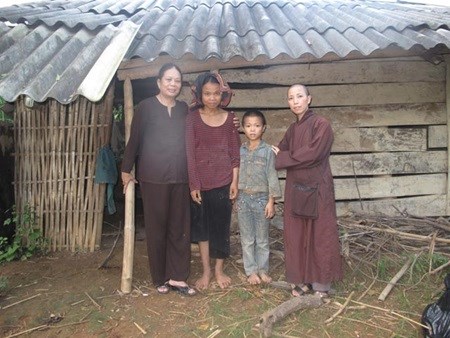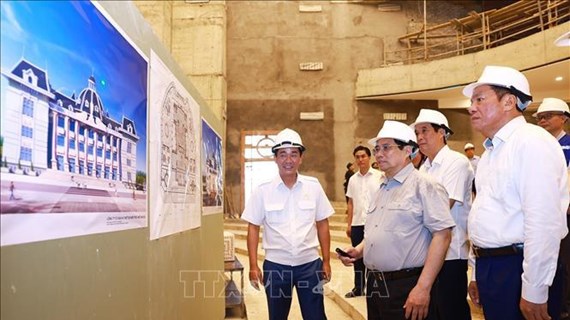Vietnam shifts to multidimensional poverty scale
The Ministry of Labour, Invalids and Social Affairs (MoLISA) has replaced the single-dimensional approach to poverty with the multidimensional measurement method for 2016 – 2020 period.
 A makeshift house of Lo Thi Thien, a poor family in mountainous Son La Province. The Ministry of Labour, Invalids and Social Affairs has replaced the single-dimensional approach to poverty with the multidimensional measurement method for 2016 – 2020 period. (Source: danviet.vn)
A makeshift house of Lo Thi Thien, a poor family in mountainous Son La Province. The Ministry of Labour, Invalids and Social Affairs has replaced the single-dimensional approach to poverty with the multidimensional measurement method for 2016 – 2020 period. (Source: danviet.vn)The Minister of Labour, Invalid and Social Affairs Pham Thi Hai Chuyen spoke on the People Ask, Minister Answers television programme on VTV1 on October 18 about government's policies on sustainable poverty reduction, on the occasion of "Action month for the Poor" in October.
The new multi-dimensional measurement, taking effect from January 1, 2016, will not only be based on people's income but also on under-privileged people's access to the necessities of life such as healthcare, education, housing and so on.
"Therefore, the multi-dimensional standards will enable poor people to get access to these fundamental services," said Chuyen.
She said the MoLISA has also advised the Government to review the entire policy on the poor to reassign responsibilities of the ministries in each area to avoid duplication in the implementation of policies on poverty reduction.
Besides, the government decided to reduce national general target programmes from 16 to two: focusing on the construction of new-style rural areas and sustainable poverty reduction.
Since 2016, Chuyen said the poverty line will be increased to a higher level.
In the period of 2006-10, Vietnam's poverty line stipulated for rural areas was 200,000 VND (9 USD) per person per month, and the figure for the cities was 260,000 VND (11.6 USD) per person per month.
In the period 2011 to 2015, the country's poverty line increased to 400,000 VND (17.9 USD) per person per month in rural areas and 500,000 VND (22.4 USD) per person per month in urban areas.
Chuyen said President Truong Tan Sang recently told the United Nations General Assembly that Vietnam was one of the six earliest countries to complete Millennium Development Goals (MDGs) in poverty reduction, two years earlier than its international commitment.
She said there are many reasons for this outstanding achievement.
"Reducing poverty is a major, consistent social policy of the Vietnamese Party and State. The Central Committee had its own resolutions on ensuring social security, in which poverty reduction is one of the targets that must be achieved as soon as possible," Chuyen said.
The Government promulgated specific policies to support the poor, such as providing support for agricultural land, loans, funding for forest protection for highlanders as well as support for education, housing, clean water and medical insurance, she added.
"In each programme, the government assigned specific tasks for each ministry and all of them performed the task with determination," Chuyen said.
Also the Government promulgated the programme 30A to support 64 poor districts across the country to rapidly reduce poverty through investment in essential infrastructure system, such as irrigation and transportation.
Programme 30A, implemented since 2008, is considered one of the most important national initiatives.
It received about 22,189 billion VND (1.03 billion USD) in funding during the 2008 to 2015 period, 77 percent of which was sourced from the State budget. The programme has focused on the 62 poorest districts in the country, with each receiving 35 to 40 billion VND per year on average.
The number of poor households in the 62 districts reduced from 378,000 at the end of 2010 to 234,743 at the end of 2014, a reduction of about 38 percent.-VNA













